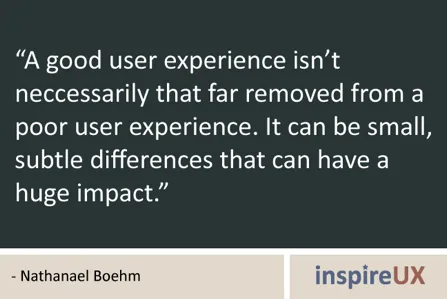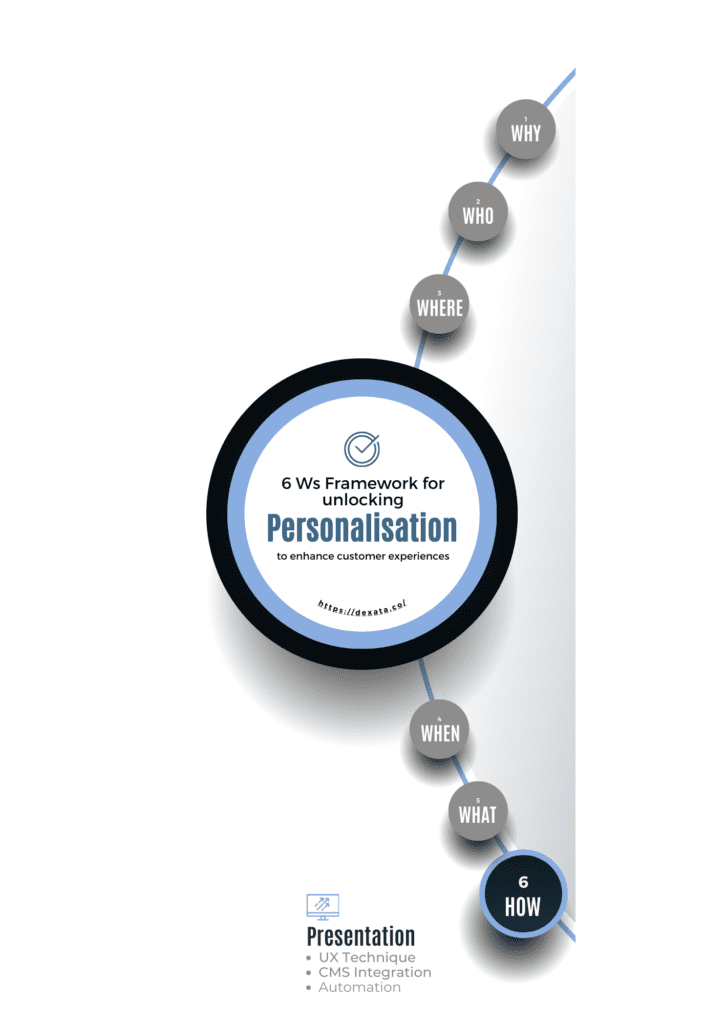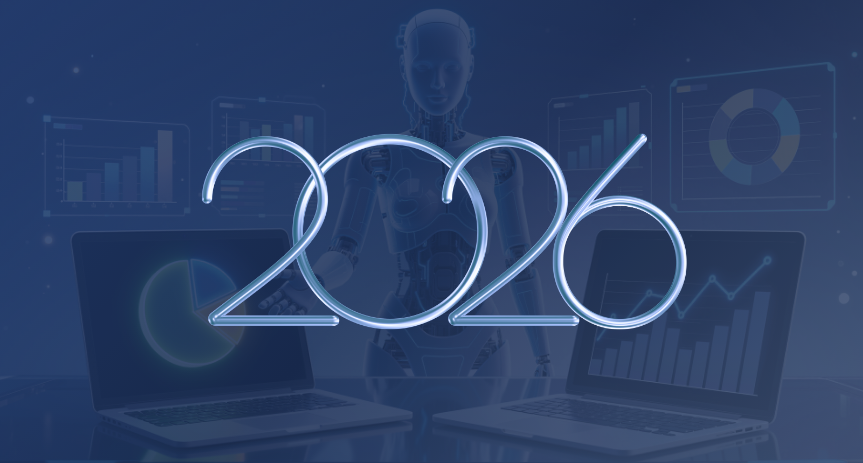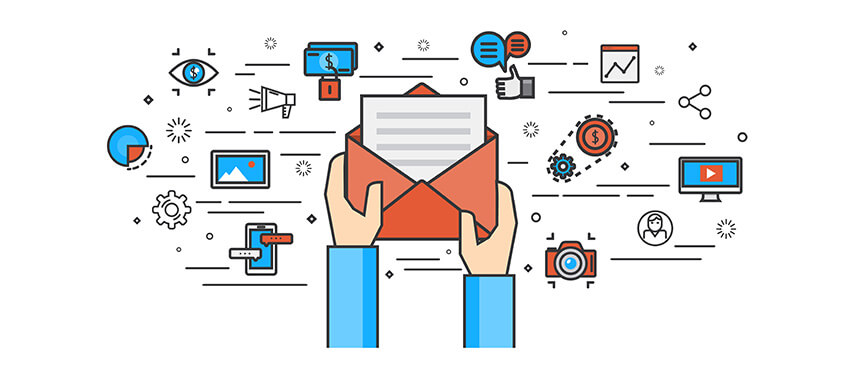
Covering my thoughts on personalisation through by answering 6 questions helped me learn a lot and I am excited to finish this blog-series with the ‘How of Personalisation’ — the holy triad of Data, User Experience and Technology that demands marketers, designers and analysts to come together and collaborate.
But before that, a quick recap of last post:
Through WHAT marketers define the message they want their audiences to see. Answer of HOW defines the way personalised experience needs to be presented to intended audience.
WHAT?: What defines the actual personalised message itself. For example: get 25% off on iPhone accessories’
HOW?: How tells the way content is presented. For example: presenting above mentioned message using a Push notification

Speaking of UX, I personally do not have a background in UX design but have been speaking to industry colleagues much more well-versed on the subject. So my research did involve stepping outside my comfort zone into how UX practitioners view Personalisation. (and hoping this post, I am able to do justice to Nathanael Boehm excellent quote above).
HOW is all about a brand’s ‘personalised presentation’ to your customer at the moment of interaction. And please, please — personalising Homepage Banner is not the only presentation technique as many believe which often results into numerous hours lost to gain control of that first carousel-slot. Quick insight — according to a test run by Notre Dame university, automatically rotating carousel banners have click-through rate of just 1%. Figures for your site could be different so try a few alternatives like Push Notifications, SMS, Light-boxes, Toastrs or a simple text change in the Top-Left module of Homepage which, as per your favourite Heat-map tool, is the most engaging section.
Three parts of answering HOW are:
- Delivery Technique/Approach: which tool and UX technique to use for presentation
- Experimentation: Always-on test & learn culture to continuously optimise experience
- Delivery Decisioning: whether rules for experience delivery are manual or algorithmic

1. Delivery Technique/Approach
First part of answering HOW is to understand the platform(s) that will be be used to present personalised experience. Some examples of platforms are SMSs, emails, Push notifications, Mobile Apps, Kiosks and Web pages. Mostly, there will be more than one options to which platforms to use for presenting personalised message. For example, if we want to show personalised message on mobile devices, 2 most common tools are SMSs and Push notifications, in addition to website and mobile app. Analytics data can play crucial part while making the decision around platform, by understanding top platforms that audiences use to engage with our brand. Further deep dives to bring channel conversion rates and attribution of these techniques to final transactions will lead to identify most appropriate platforms.
Second part is to chose the technique itself. Each platform provides different options to present personalised message and that’s where creating strong collaboration with UX teams is important for the success of Personalisation campaign. Push Notifications can be as simple as some lines of text as well as supported by rich-media. Videos and images ( try GIFs!) increase creativity potential, making personalisation campaigns more impactful and more memorable.
Working closely with UX teams introduces to numerous supporting-techniques like eye-movement-tracking, usability testing, user personas that can help in creating a always-on optimisation programme that builds immersive experiences.
A few more aspects to take care of when deciding the delivery technique:
A. Intrusiveness: While there are many techniques to choose from, put yourselves in your customers’ shoes to avoid creating intrusive experiences that are invasive and turn them off. Customers can develop an antipathy to a business, meaning the marketing campaign has accomplished the opposite of its aim.
B. Page performance: Remember those Flash files that made even a simple page to take ages to download. According to a research by Microsoft, our attention span is decreasing. So if you want personalised experiences to be memorable, make sure they are rendered fast. Moreover, a good design should not penalise other parts of the page. Make use of performance testing tools like AppDynamics to keep an eye on impact your experiences have on targeted pages/screens.
Eventually, a good presentation technique’s objective is to make our audience’s experience intuitive and as frictionless as possible, which very nicely compliments to Personalisation objectives. UX is much wider topic so the best way to for us marketers to answer HOW, is to collaborate with UX colleagues and work with them closely to define immersive experiences that convert.
2. Always-on Experimentation
Chad Sanderson, one of the most followed expert within the field of Experimentation says “Experimentation is the explore phase — personalisation should be the exploit phase”. Personalisation eventually is part of wider Experience optimisation process and we marketers should keep optimising campaigns’ presentation (and all other aspects) as part of Always-on test and learn programme.
We may find that a Push notification performs better than a Hero banner but don’t stop there — experiment further to find whether it’s true for all scenarios and audiences? Answering HOW as part of Personalisation programme, coupled with Experimentation may result into same message being presented through different techniques to multiple audience-segments.
Identify obstacles, test them and continuously optimise experiences to ensure that you always perform well. When your test is based on a UX approach, the results are significantly better. An impactful experience platform knows how to combine experimentation with an irreproachable user experience. Both these practices of Experimentation and UX should work together, because, after all, the end goal for both is the same!
Lastly, Experimentation is not just about running A/B tests. We should also leverage both Qualitative and Quantitative data.
- Qualitative measures like User testing, User research (when did you last sat next to your customer service team and listen to what your customers are calling about). More about how to do qualitative research on https://conversionxl.com/blog/how-qualitative-research-conversions/
- Quantitative (Analytics data, A/B testing, Session-replays, Heat-maps)
Conversion Rate Organisation (CRO) is the domain that covers Experimentation and has tons of articles, information and help material available on the internet. You can follow industry leads like Peep Laja and Chad Sanderson to keep yourselves abreast of the latest developments. Multiple summits and events are organised worldwide every year to cover best practices in CRO domain — they are worth attending. Alternatively hire an agency to take you through initial journey. Gist is — embrace experimentation as an integral part of work culture!
3. Delivery Decisioning
Artificial Intelligence and Machine Learning are 2 of the most talked about technical topics currently. While their applications are vast — including image recognition, self-driven cars, healthcare and so on, personalisation too is not an exception. Programmatic approaches are already changing the way bidding is done on search keywords and dynamically changing creatives in advertising.
Delivery decision approaches can be of 2 types depending upon who sets the the rules around which experience should be shown to which segment of targeted audience:
A. Manual rule based: In this approach, marketers build a rule based logic, creating a mapping of experiences to audiences. Mapping looks like
- Present Exp. A to customers with high CLTV and coming from a specific affiliate
- Present Exp. B to customers with high CLTV but coming from organic search
While marketers have more control on delivery decision, it becomes unscalable if count of possible combinations increases.
B. Algorithm based: Here Machine Learning algorithms continuously learn from user behaviour and outcomes, and mathematically determine which experience should be delivered. This approach helps immensely in scenarios when there are myriad of possible experience-audience combinations and manual logic is simply not a solution. You can also use it as an alternative to manual-rule approach — to experiment which approach results into better business outcomes.
While there could be apprehensions around ML based approaches as these mostly act as ‘black-boxes’ and wrong data input can result into completely undesirable outcomes, its recommended to blend experience of marketers and scale of automation.
Takeaway
- Collaborate with UX teams — make them your best friends as they can help you get the best out of your personalisation campaign.
- Experimentation and personalisation go hand in hand — make equal use of both qualitative and quantitative data in experimentation.
- Consider AI & Machine Learning — to scale your personalisation efforts, by enabling automated experience delivery decisioning, powered by data collected from previous consumer visits.
About The Author
Rajneesh Gautam
What do you think?
What do you think?
An insightful and well-researched article on the strategic impact of unlocking marketing personalization. It effectively highlights how personalized approaches can drive deeper customer engagement and strengthen brand loyalty, supported by relevant and practical examples.





What do you think?
An insightful and well-researched article on the strategic impact of unlocking marketing personalization. It effectively highlights how personalized approaches can drive deeper customer engagement and strengthen brand loyalty, supported by relevant and practical examples.